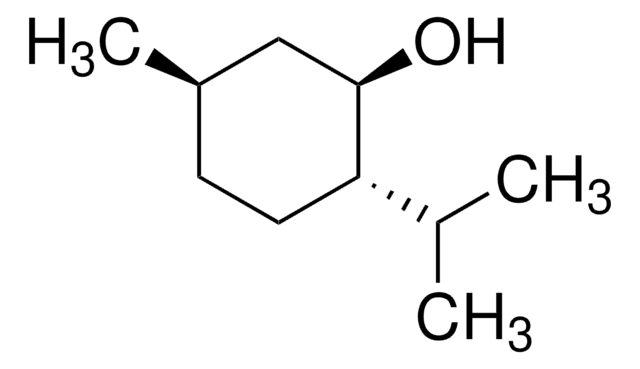32160
Diethylene glycol
puriss. p.a., ≥99.0% (GC), colorless
Synonym(s):
2,2′-Oxydiethanol, 2-Hydroxyethyl ether, Bis(2-hydroxyethyl) ether, Diglycol
About This Item
Recommended Products
vapor density
2.14 (vs air)
Quality Level
vapor pressure
0.01 mmHg ( 20 °C)
description
non-ionic
grade
puriss. p.a.
Assay
≥99.0% (GC)
form
viscous liquid (clear)
autoignition temp.
442 °F
expl. lim.
2-12.3 %
impurities
≤0.003% peroxides (as H2O2)
≤0.01% free acid (as CH3COOH)
≤0.1% water
≤0.8% ethylene glycol (HOCH2CH2OH)
color
colorless
APHA: ≤25
refractive index
n20/D 1.447 (lit.)
n20/D 1.447
bp
245 °C (lit.)
mp
−10 °C (lit.)
density
1.116 g/mL at 20 °C
1.118 g/mL at 25 °C (lit.)
cation traces
Ca: ≤5 mg/kg
Cd: ≤1 mg/kg
Co: ≤1 mg/kg
Cr: ≤1 mg/kg
Cu: ≤1 mg/kg
Fe: ≤2 mg/kg
K: ≤20 mg/kg
Mg: ≤1 mg/kg
Mn: ≤1 mg/kg
Na: ≤20 mg/kg
Ni: ≤1 mg/kg
Pb: ≤1 mg/kg
Zn: ≤10 mg/kg
SMILES string
OCCOCCO
InChI
1S/C4H10O3/c5-1-3-7-4-2-6/h5-6H,1-4H2
InChI key
MTHSVFCYNBDYFN-UHFFFAOYSA-N
Looking for similar products? Visit Product Comparison Guide
General description
Application
Signal Word
Warning
Hazard Statements
Precautionary Statements
Hazard Classifications
Acute Tox. 4 Oral
Storage Class Code
10 - Combustible liquids
WGK
WGK 1
Flash Point(F)
280.4 °F - closed cup
Flash Point(C)
138 °C - closed cup
Personal Protective Equipment
Choose from one of the most recent versions:
Already Own This Product?
Find documentation for the products that you have recently purchased in the Document Library.
Customers Also Viewed
Our team of scientists has experience in all areas of research including Life Science, Material Science, Chemical Synthesis, Chromatography, Analytical and many others.
Contact Technical Service





